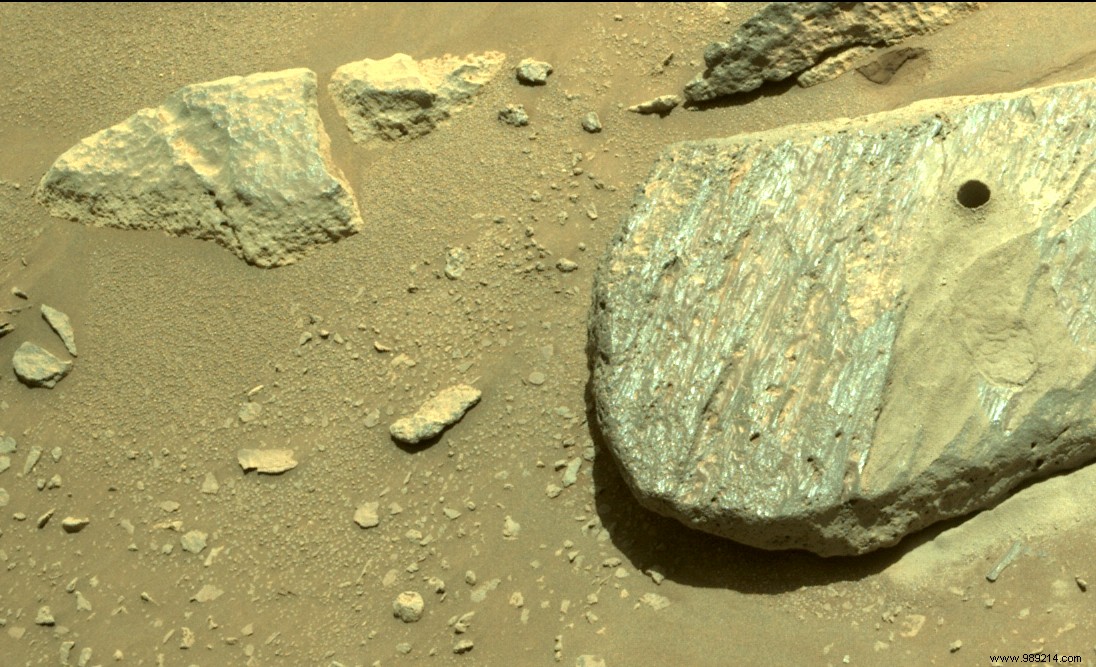It's done! After a failed first attempt last month, the American rover Perseverance successfully drilled and collected a sample of Martian rock in excellent condition. This tiny carrot, which will be brought back to Earth in the early 2030s, may contain traces of past microbial life.
The first attempt, made on Thursday, August 5, did not go as planned. It turned out that the rock that Persevrance had drilled into was much softer than the researchers had imagined. The "carrot" had then simply crumbled into powder under the drill.
Several warning signs suggested that the rock targeted on this first attempt might not be the most promising. Its brown color indeed indicated the presence of rust. It was also full of holes and had a lot of salts in it. This meant that this rock had evolved in an aqueous medium for a very long time. The analysis of the mineralogical changes caused by water could then have taught us a great deal about ancient Mars, hot and humid. However, a rusty, salty rock filled with holes is also a very friable rock.
Note that the August 6 operation was not a total waste of time. The tube does indeed contain sealed, uncontaminated Martian air. His analysis could therefore be valuable.
This time it's the right one. Perseverance (or "Percy", for those close to you) has just successfully taken its first Martian sample from a rock called Rochette, located on a ridge slightly higher than the surrounding landscape.
“We selected the hardest rock you can find up there” , underlined at Times Dr. Kenneth A. Farley, California Institute of Technology. "This block has survived the ages and has not been eroded by the winds, strong proof that it was not friable" .

After being measured and imaged again, the tube will finally be hermetically sealed and stored in Perseverance's belly. In a few years, the rover will drop its sample on the ground, where it will be picked up by another vehicle sent to Mars as part of a future joint NASA and ESA mission.
This tube, and many others will then be brought back to Earth for analysis. Inside, scientists hope to find traces of ancient life, likely microbial. The recently removed rock, which looks like a piece of hardened lava, can also be dated precisely.